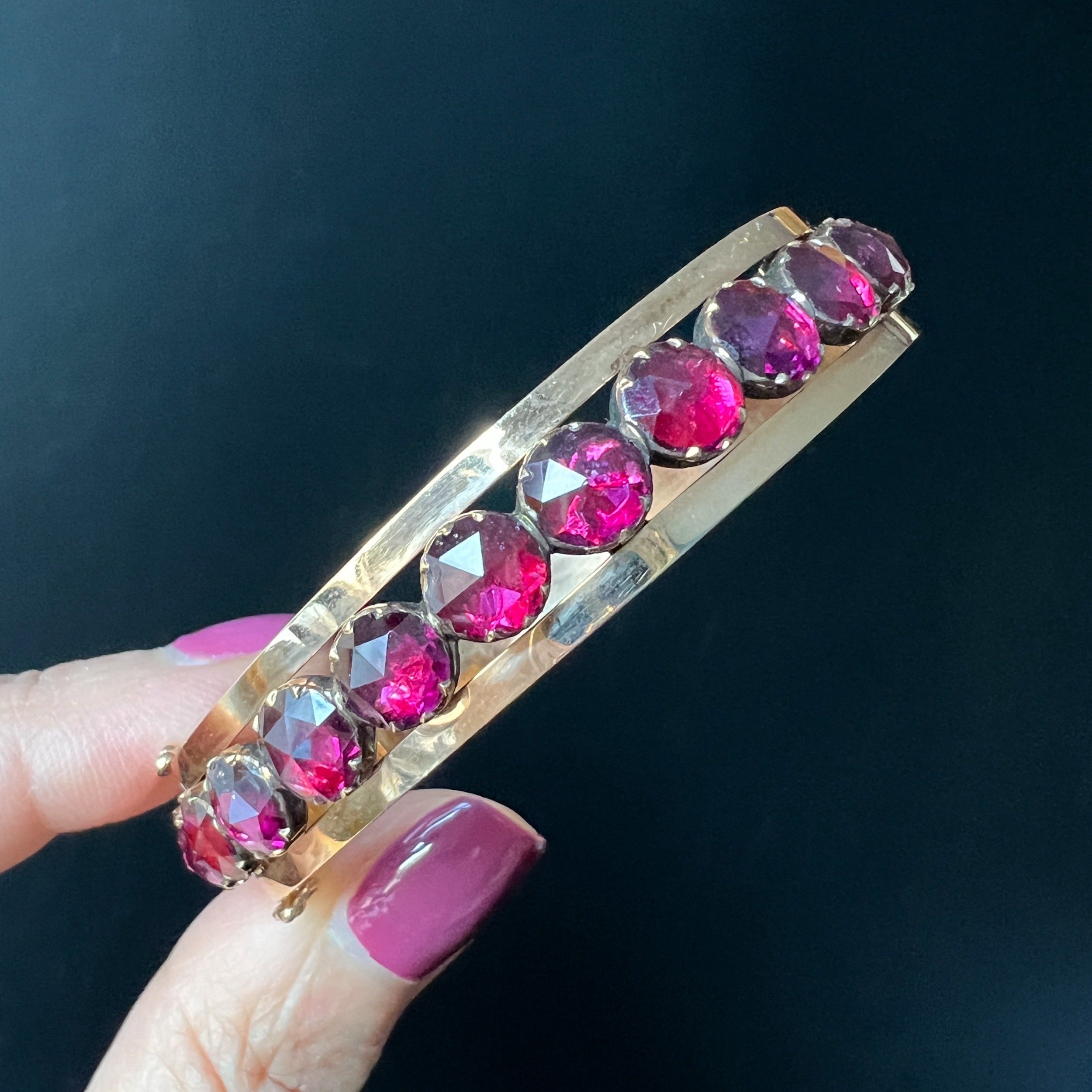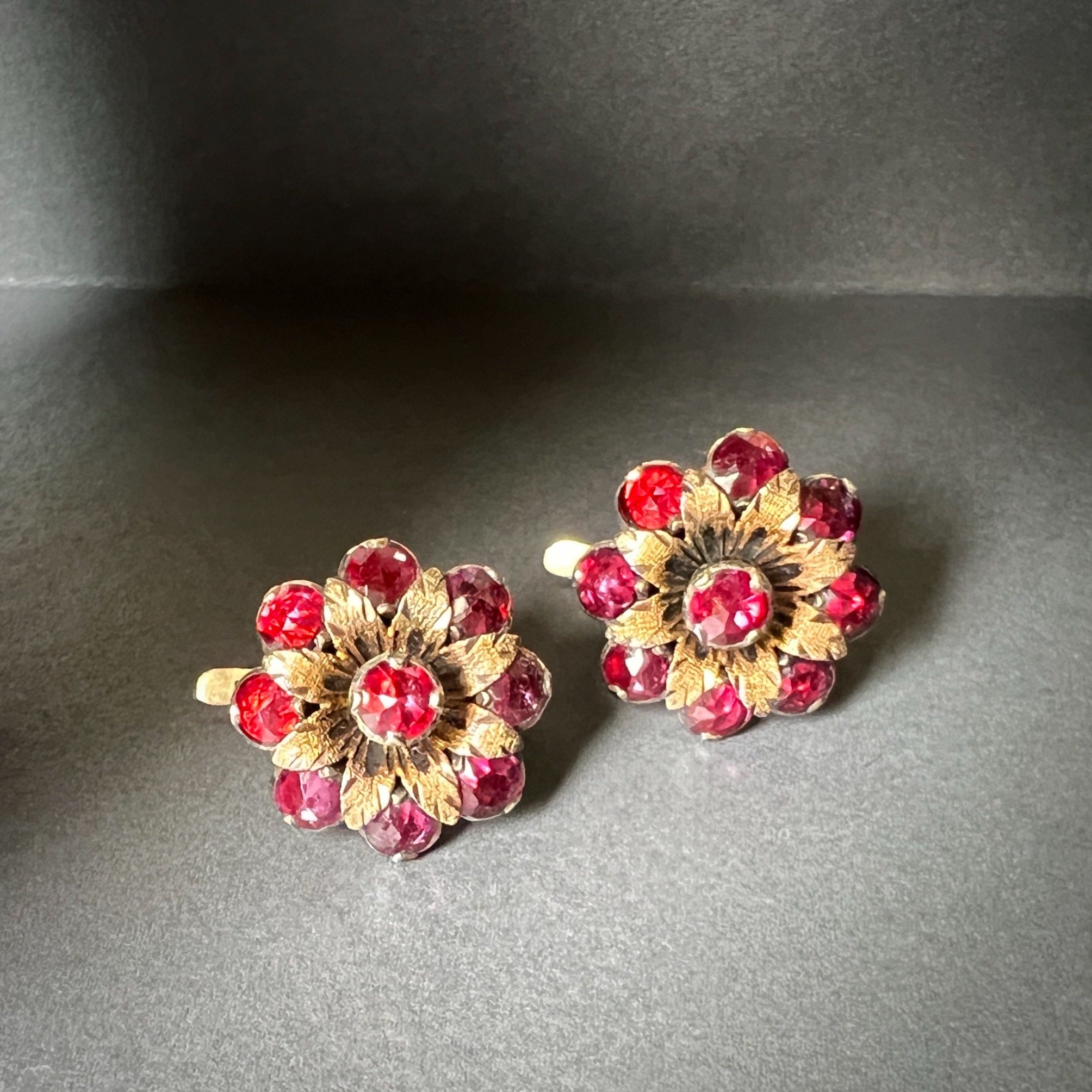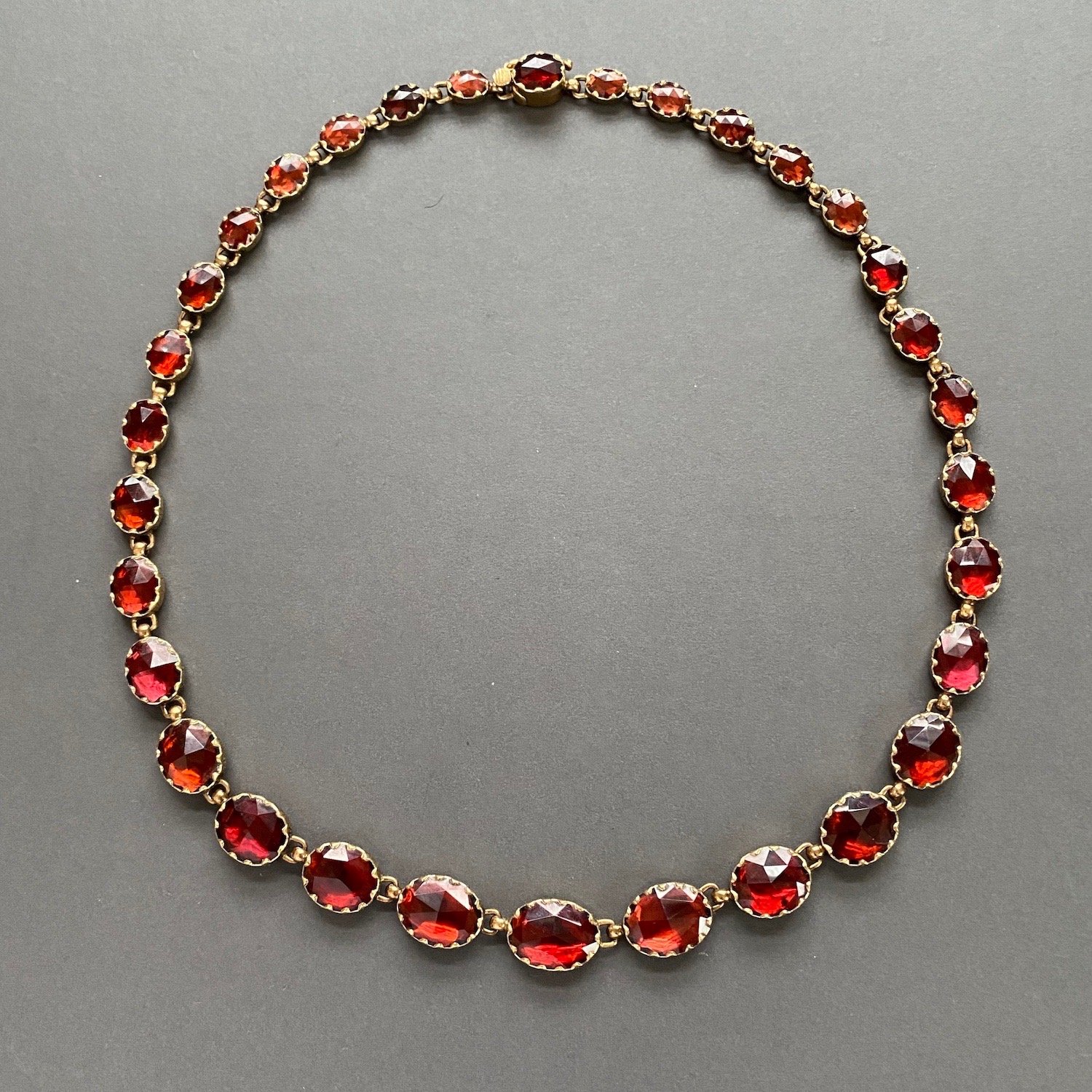On the Road Again: To Perpignan, France!
If you know me at all, you know I love to travel. My most recent trip took me to a small town in southwest France: Perpignan. Why Perpignan? It has been a bee in my bonnet for years. I happen to adore the distinctive jewelry that bears its name — Perpignan garnet. I’m always on the hunt for pieces set with those fiery, glowy stones — preferably antique, with an inexplicably modern appeal. Think classic rivières, halo rings, romantic swagged collars, or crisp line bangles (there’s a gorgeous one in the shop right now).
Also, nothing motivates me quite like a missed opportunity. Years ago, on a road trip from the South of France to Barcelona, I passed just miles from Perpignan — but couldn’t make the detour. I was convinced I had driven right past a hoard of Perpignan jewels just waiting for me to scoop up. So when planning a trip to Barcelona this past May, I knew I had to cross the Pyrenees into French Catalonia and finally get to Perpignan!
Was it worth the wait? Absolutely.
If you're a devotee of Perpignan garnet jewelry — you know who you are — and you are in the area, go for the day to Perpignan. Start your morning at the Palace of the Kings of Majorca, a dramatic 13th-century fortress with sweeping views over the town — all the way to the Pyrenees. Currently, the palace in partnership with the Institut de Grenat hosts a beautifully curated and comprehensive exhibition on Perpignan garnet jewelry. You’ll find exemplary pieces that showcase the artistry of this distinctive regional jewel, along with fascinating history and insights into how each piece of Perpignan garnet jewelry was made — from the cutting and polishing of the signature rose-cut stones, to the placement of tinted foils behind them to enhance their color and glow. I definitely did audibly gasp once or twice at some of the beautiful jewels on display.
A display of 19th century Perpignan garnet jewelry, on view at the Palace of the Kings of Majorca.
Closer look. Gorgeous color.
Swagged or bib collar, viewed at the Palace of the Kings of Majorca, similar to one available in my shop.
Gorgeous demi-parure, with convertible brooch/pendant, viewed at the Palace of the Kings of Majorca.
Once you’ve feasted your eyes, enjoy a leisurely lunch in the old town. Then, take your time wandering and stopping in to nearby shops. With luck, you might spot a hidden Perpignan garnet treasure — though fine 19th-century examples are getting harder to come by. More recent, vintage pieces are more common, and you’ll notice that their garnets tend to skew redder, rather than the rich raspberry-pink of the older jewels (which I personally prefer). If you find a great, antique example you love, within your budget, give it serious consideration. There is no regret quite like the one you feel for a one-of-a-kind jewel left behind thousands of miles away.
Bonus detour: Collioure.
After Perpignan, I highly recommend a visit to nearby Collioure, a ridiculously charming seaside town that so beguiled Matisse he moved there to paint. I wandered without an agenda (isn’t that the best), taking in the landmark castle and panoramic sea views. I refueled over lunch at an outdoor café packed with locals enjoying the menu du jour. Just a tip: unlike nearby Spain, lunch in this area is eaten early — try to sit down before 2 p.m. or you risk missing the kitchen window!
After a delicious meal, I did a bit of shopping for espadrilles — the rope-soled shoes traditionally worn by both men and women in this region. The shop I visited proudly displayed a photo of Salvador Dalí wearing a pair, complete with long ties wrapped around his ankles. How could I resist. I finished my day with a tour and tasting at a local wine cave located in a 13th century Dominican convent. This was simply a perfect day trip. Go - and you’ll see why Collioure was voted France’s Favorite Village in 2024. You’re welcome — in advance!
Want to see more Perpignan garnet jewelry?
If you’re curious to see some examples of Perpignan garnet jewelry, take a look below at a few of the current and sold Perpignan jewels from my shop — or visit the informative website of the Institut du Grenat. If you’d like to add to your jewelry book library, I can recommend Grenat de Perpignan: Le bijou sang et or by Laurent Fonquernie. It’s great for a deeper appreciation for the savoir-faire and traditions that went into every piece of Perpignan garnet jewelry. No wonder they are beloved heirlooms — symbols of French Catalan pride — passed from one generation to the next.
I’m always looking for Perpignan jewels for my shop, so keep your eyes open, or reach out to me with any questions on the available pieces!
XO, Yvonne











